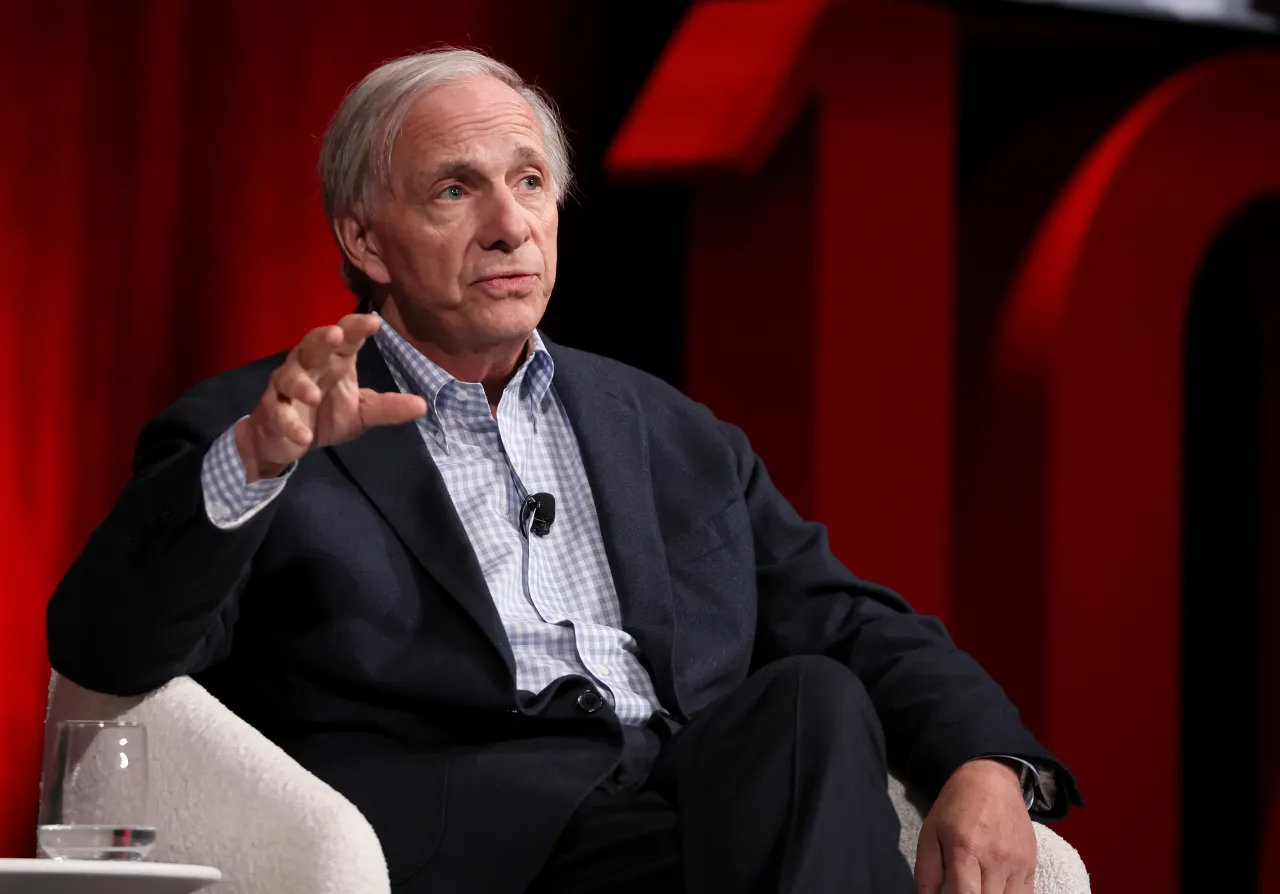Advertisement|Remove ads.
Ray Dalio Says Fed’s Quantitative Easing Is ‘Stimulus Into A Bubble’

- Dalio’s comments come at a time when the Fed has announced that it will halt its QT program on December 1, with its balance sheet currently standing at approximately $7 trillion.
- He said that it will be important to watch how much the Fed adds to its reserves, along with the pace of easing through interest rate cuts.
- Earlier in October, Fed Chair Jerome Powell stated that the central bank’s reserves have to be ample.
Bridgewater Associates founder Ray Dalio stated on Thursday that the Federal Reserve’s announcement to stop Quantitative Tightening (QT) and begin quantitative easing (QE) next year could be a case of the central bank providing stimulus into a bubble.
Dalio highlighted a range of factors to support his argument. This includes asset valuations being at a high and on an upward trajectory, a strong economy, above-target inflation, and abundant credit, as well as liquidity in the system.
“While I understand the Fed being highly attentive to funding-markets risk which means being inclined to prioritize market-stability over fighting inflation aggressively, especially in this political environment, at the same time, whether this becomes a full and classic stimulative QE (with big net purchases) remains to be seen.”
— Ray Dalio, founder, Bridgewater Associates
Dalio’s comments come at a time when the Fed has announced that it will halt its QT program on December 1, with its balance sheet currently standing at nearly $7 trillion.
Fed Intervention
Dalio stated that it will be important to watch how much the Fed adds to its reserves, along with the pace of easing through interest rate cuts.
“If the balance sheet starts expanding significantly, while interest rates are being cut, while the fiscal deficits are large, we will view that as a classic monetary and fiscal interaction of the Fed and the Treasury to monetize government debt,” he said.
Dalio stated that if this happens at a time when AI stocks are in a bubble, this will be a case of stimulating a bubble.
Upcoming Easing Different From Past
Dalio noted that the upcoming easing is different this time from what the Fed has done historically. He said that during the central bank’s previous instances of easing, asset valuations were falling, the economy was either weak or contracting, inflation was low or falling, and debt and liquidity issues were substantial.
Earlier in October, while addressing a press conference following the Federal Open Market Committee’s (FOMC) meeting, Fed Chair Jerome Powell stated that the central bank’s reserves have to be ample.
“At a certain point, you'll want to start – you'll want to start reserves to start gradually growing to keep up with the size of the banking system and the size of the economy,” Powell said, confirming that the Fed will gradually add to its reserves at a certain point.
Meanwhile, U.S. equities were up in Thursday’s pre-market trade. At the time of writing, the SPDR S&P 500 ETF (SPY), which tracks the S&P 500 index, was up 0.2%, the Invesco QQQ Trust ETF (QQQ) gained 0.17%, while the SPDR Dow Jones Industrial Average ETF Trust (DIA) rose 0.05%. Retail sentiment around the S&P 500 ETF on Stocktwits was in the ‘bearish’ territory.
The iShares 7-10 Year Treasury Bond ETF (IEF) was up 0.15% at the time of writing.
For updates and corrections, email newsroom[at]stocktwits[dot]com.











/filters:format(webp)https://news.stocktwits-cdn.com/large_Getty_Images_2071907975_jpg_85e059f13e.webp)
/filters:format(webp)https://st-everywhere-cms-prod.s3.us-east-1.amazonaws.com/unnamed_jpg_9dff551b50.webp)
/filters:format(webp)https://news.stocktwits-cdn.com/large_medline_jpg_51082f0148.webp)
/filters:format(webp)https://news.stocktwits-cdn.com/IMG_8805_JPG_6768aaedc3.webp)
/filters:format(webp)https://news.stocktwits-cdn.com/large_dbv_tech_jpg_6fddcbe1e6.webp)
/filters:format(webp)https://news.stocktwits-cdn.com/large_waymo_jpg_4a90f6626f.webp)
/filters:format(webp)https://news.stocktwits-cdn.com/large_netflix_paramount_warner_bros_jpg_c959c8a9e4.webp)
/filters:format(webp)https://news.stocktwits-cdn.com/large_Luckin_Coffee_Resized_jpg_b90b41df8c.webp)